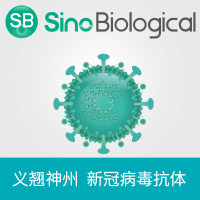Determination of Antibody Glycosylation by Mass Spectrometry
互联网
互联网
相关产品推荐

Recombinant-Hordeum-vulgare-High-molecular-mass-early-light-inducible-protein-HV58-chloroplasticHigh molecular mass early light-inducible protein HV58, chloroplastic; ELIP
¥10556

新冠病毒SARS-COV-2中和抗体(RBD 兔单抗)
¥2000

Recombinant-Hordeum-vulgare-Low-molecular-mass-early-light-inducible-protein-HV60-chloroplasticLow molecular mass early light-inducible protein HV60, chloroplastic; ELIP
¥9968

Recombinant-Hordeum-vulgare-Low-molecular-mass-early-light-inducible-protein-HV90-chloroplasticLow molecular mass early light-inducible protein HV90, chloroplastic; ELIP
¥9968

PSMB10/PSMB10蛋白Recombinant Human Proteasome subunit beta type-10 (PSMB10)重组蛋白Low molecular mass protein 10 Macropain subunit MECl-1 Multicatalytic endopeptidase complex subunit MECl-1 Proteasome MECl-1 Proteasome subunit beta-2i蛋白
¥1344

